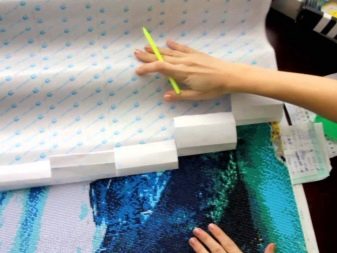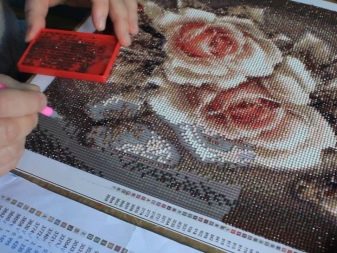All about diamond mosaic

Diamond mosaic is a kind of creativity for lovers of needlework without the use of threads and needles. Of course, not real diamonds are used in the work, but plastic stones with a high-quality cut, which visually resembles the flickering of precious stones. Flickering pictures made using this technique look stylish and aesthetically pleasing.
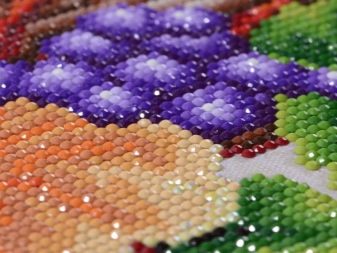

What it is?
Diamond mosaic involves the creation of artistic paintings on canvas using pebbles according to a special pattern. The history of decorating things with shiny rhinestones is rooted in the distant past. For the first time, craftsmen began to use the technique during the time of Ancient Greece - it all started with decorating the clothes of noble nobles. For this, they used not rhinestones, at that time they were not yet available, but precious stones or pearls. They laid out intricate designs and abstractions on the collar and sleeves, fixing them on wax or glue. Of course, only the richest Greeks could afford such a luxury.
Years passed, diamond mosaic, like any other type of creativity, gradually improved. During the Middle Ages, bugles were first introduced into use, and it was he who became the progenitor of modern diamond mosaic. Already at that time, canvas was used as a canvas, where the designations for the distribution of beads were applied.
Along the edging, multi-colored pieces of glass were glued onto it, having saturated the base with wax in advance.

In Russia in the 19th century, glass beads mosaic was popular among noble aristocrats. Decorated with stones:
-
wallets and bags;
-
art paintings;
-
icons;
-
clothes;
-
bracelets and other jewelry.
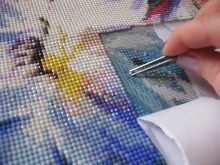
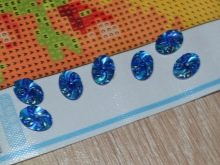

At some point, the technique faded away and lost its former popularity as a hobby. However, in the middle of the twentieth century.revived with a new round of interest in arts and crafts. It was then that the definition of "diamond mosaic" was introduced.
In our time, this type of needlework has been significantly modernized. Today it is in demand for assembling panels or creating interior items. All the craftsmen need is to buy a special set, they are presented in a wide range in the departments for creativity, in sewing stores or on the Internet. You can master the basics according to standard schemes with decoding of colors, they are included in each set.
If you wish, you can find and watch a suitable master class.
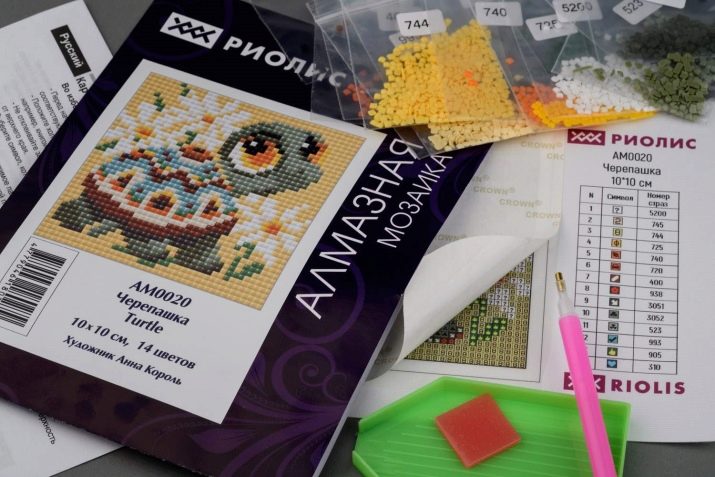
Today, polymer rhinestones are used to create paintings. The sparkling stones are glued to a pre-patterned canvas and framed. The output is a real work of art.
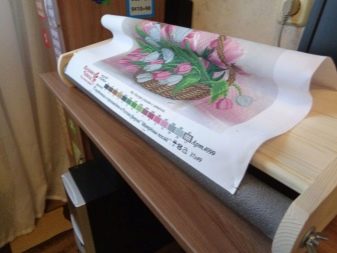

Almost all kits for needlework include everything you need to prepare a masterpiece:
-
canvas with a pattern and an adhesive base;
-
pebbles sorted by color;
-
tweezers or a pressure pencil with attachments;
-
blocks for storing stones;
-
application guide.
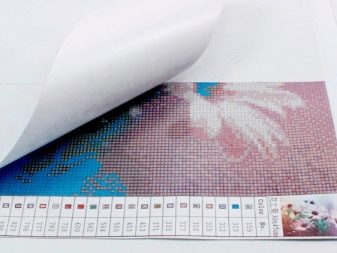
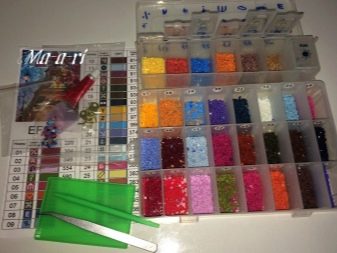
To grab the rhinestones, you can take the most ordinary pencil. In addition, you will need a metal ruler - it is used to align the already laid out rows and adjust the shifted beads. Some kits include glue to secure the stones in situations where the glue base is dry. Note that many manufacturers save money, so not all kits have a pressure pencil or tweezers. In this case, you will have to buy them separately.
Creating canvases by laying out pebbles is a real pleasure. The lesson has many advantages:
-
aesthetics - rhinestones, due to cutting, make the texture more embossed;
-
profitability - achieved due to the fact that the finished work does not have to be covered with glass;
-
simplicity - the level of complexity of the work is low, even novice masters can cope with the picture.

However, diamond mosaic has its drawbacks:
-
overpriced sets;
-
laboriousness, assembly takes a lot of time;
-
the risk of stones with defects - of different shades, sizes, or even defective.
Many people call diamond mosaic embroidery. This is not entirely correct. Of course, the principle of laying out pictures is similar to the technique of embroidery with beads.
However, the mosaic differs in that you do not need to embroider, but to plant stones on a glue base.
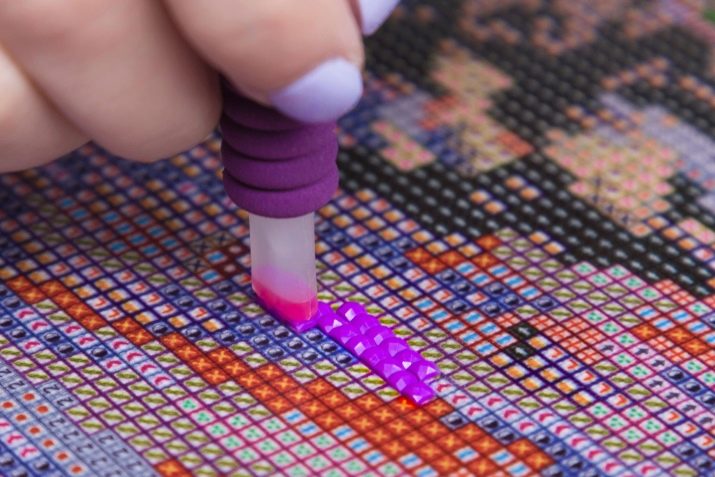
Types and plots
All types of diamond mosaics can be divided into several groups according to certain criteria. Let's dwell on each of them in more detail.
Canvas Painting Type
The scheme on the canvas can be multi-colored or black and white. The latter option usually provides for an alphabetic or numeric designation. For the manufacture of large canvases, experienced craftsmen recommend opting for color schemes.
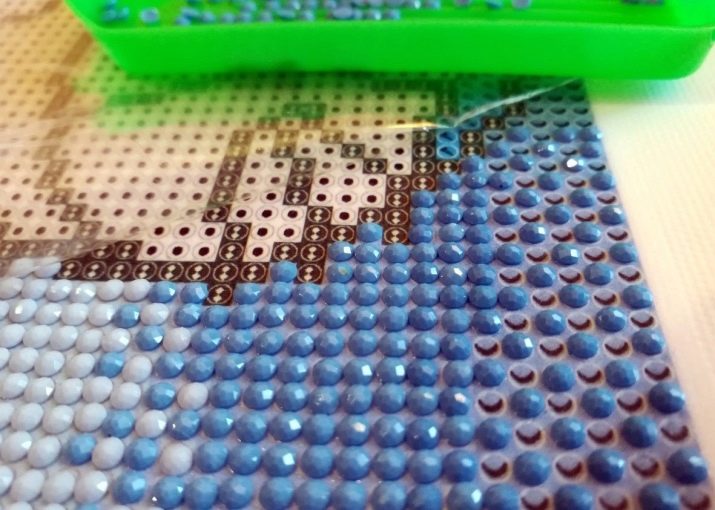
Layout type
It can be complete or partial. In the second case, a certain element of the picture is laid out on the canvas, as a rule, this is the central block. All other details are made with high quality printing. When fully laid out, the picture is filled with pebbles in full.
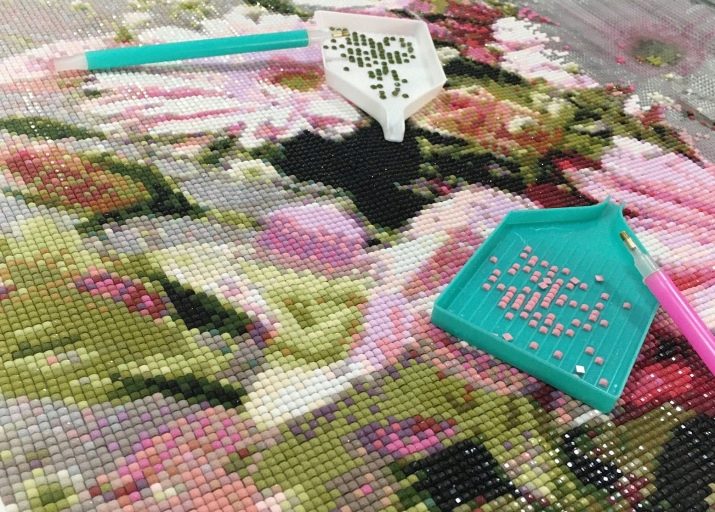
To size
Options 30x40 and 40x50 cm are considered typical. Although some firms offer kits with different parameters.


By design of the basis
A classic rhinestone mosaic assumes a canvas with a pre-printed pattern on it. The updated version is a counting mosaic: on the light base there is only grid markings, and a printed color pattern is attached additionally. In this case, the self-placement of the decor on the canvas is meant.
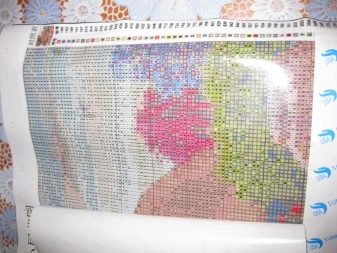
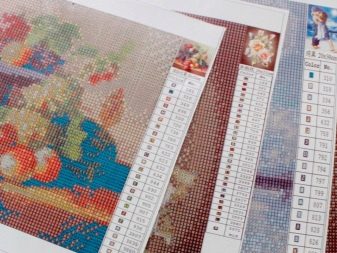
By the type of rhinestones, stones for embroidery can be:
-
square - opaque or matte, usually their dimensions are 2.5x2.5 mm;
-
round - they can also have a matte or shiny appearance, it is easier to work with them, since there is no need to fit the pebbles exactly butt to joint.
If you wish, you can also assemble a picture from Swarovski crystals.These stones are fixed either with glue or by heating.
Usually, only the outlines of the pattern are laid out with expensive rhinestones, or individual elements are filled.

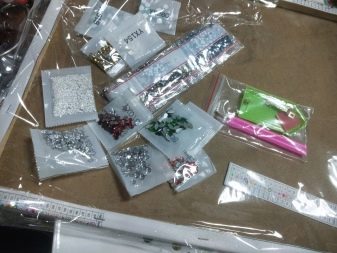
As for the plots, the most popular are plant motifs - these can be landscapes, bouquets or individual flowers, images of lilacs, irises, poppies and roses look especially attractive in this technique. Such paintings can be not only modular, they are also often performed in the form of a triptych.
The theme of the animal world is invariably in the top. Children's sets often use stories with cats, cats and dogs, mosaic for adults allows you to lay out a wolf, horse, lion, tiger, swan or peacock. The architectural line is gaining popularity. Girls are interested in thematic paintings with ballerinas, boys - with space, older guys prefer the themes of Harry Potter and anime.
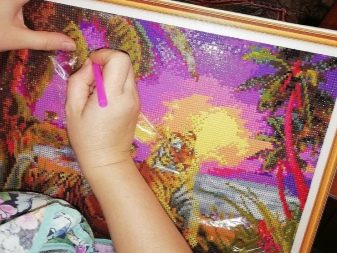

In recent years, there has been a tendency towards the choice of modern plots - in terms of the number of sales, they surpassed the eternal classics. Fashion, pop art, ethno and 5D are especially popular. This is probably due to the fact that the target audience has become noticeably younger. If in former times women of the middle and older age groups were mainly fond of needlework, nowadays they are more and more often masters up to 30 years old.
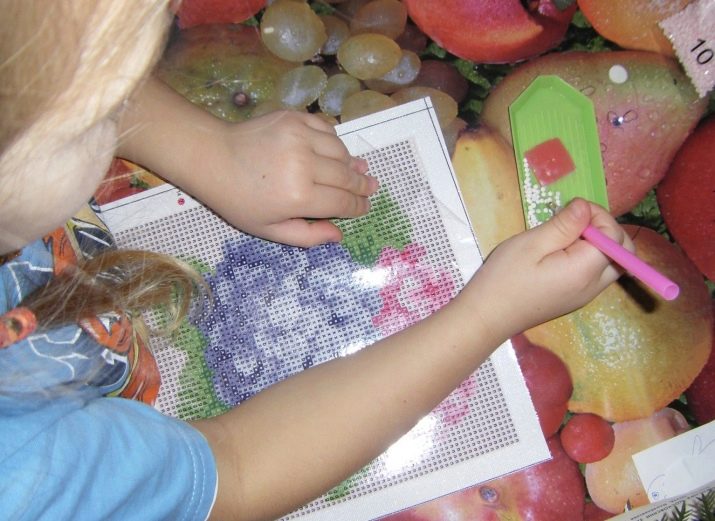
Manufacturers
Many are wondering which diamond mosaic to choose: Russian or Chinese. This topic has generated a lot of controversy and discussion among needlewomen. Some believe that in the Celestial Empire there are the cheapest and most beautiful pebbles in a wide variety of species. Others claim that domestic manufacturers can also make rhinestones for every taste and color at a reasonable price. In fact, in both countries there are manufacturers offering crystals of the highest quality, and relatively inexpensive.
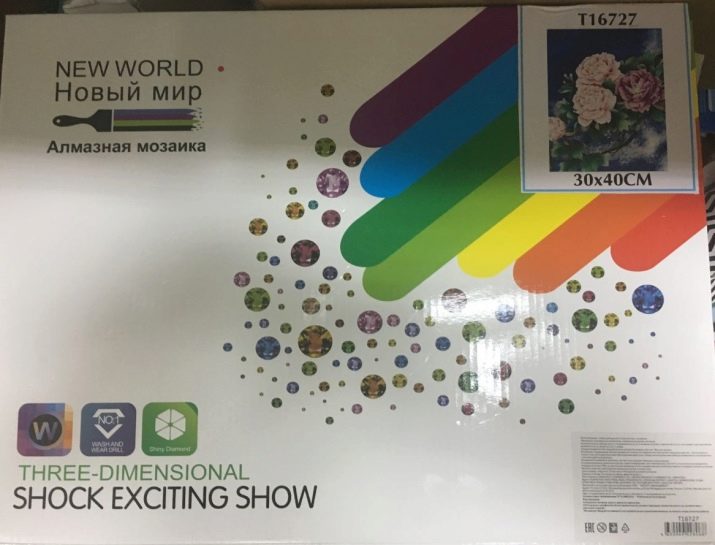
Kits from different manufacturers differ in individual characteristics: the composition of the base, the type of glue and the scheme according to which the drawing is created.
The most common brands of diamond mosaic are:
-
"Granny", "Diamond Painting" and "Web" - from Russia;
-
Color-Kit and Snow White from China;
-
Anya is from South Korea.
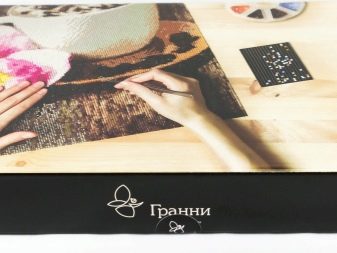

Instructions
The creation of any diamond painting takes time, while the work itself is not particularly difficult. The process of laying out the mosaic is quite painstaking, but very exciting. Be sure that once you have tried this type of needlework, you will definitely want to continue your acquaintance with the beautiful. So, let's get started, here are some basic rules of this technique step by step.
Preparation
Free your workplace from all unnecessary items, it should be perfectly clean. Remember that the basis of the work has an adhesive nature, so dirt and dust will immediately appear on it.
Sit comfortably, adjust the lighting equipment - it will be painstaking work, so your eyes will be in tension all the time. Prepare tweezers or tubes from the set, as well as other tools, tools and accessories - you will need them to lay out the rhinestones.
Expand the mosaic set, sort the work pieces, it is best to use an organizer for this.
For convenience, the canvas can be glued to the table with tape.
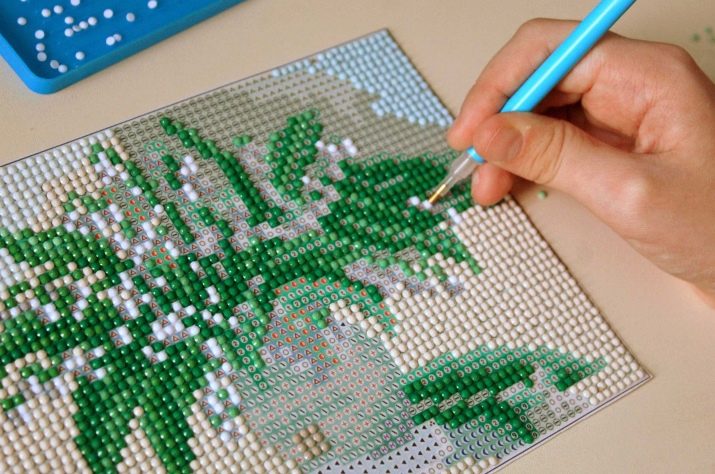
Arrange the bags with pebbles in containers for beads. Ideally, each should be labeled with its number.
Try to determine which angle will be easier for you to start work from. Apply the mosaic in fragments, all excess paper must be cut off as you work.
Tip: for the convenience of working at home, it is better to remove the film not entirely, but to open it in small areas.

Execution technique
Then you can go directly to the creation of the picture. Rhinestones of different shades are placed on the glue sheet in accordance with the numbering. The stone is taken with tweezers and dived on the desired cell. As soon as one fragment is finished, you can move on to the next.
There are three main schemes for laying out patterns from a diamond mosaic.

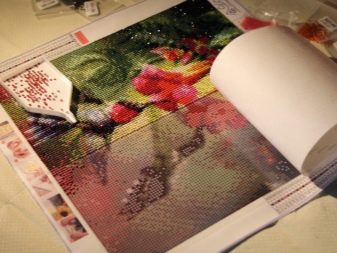
Staggered
In this case, all odd rhinestones are placed in the first row, even rhinestones in the second. Only after that are empty cells filled.
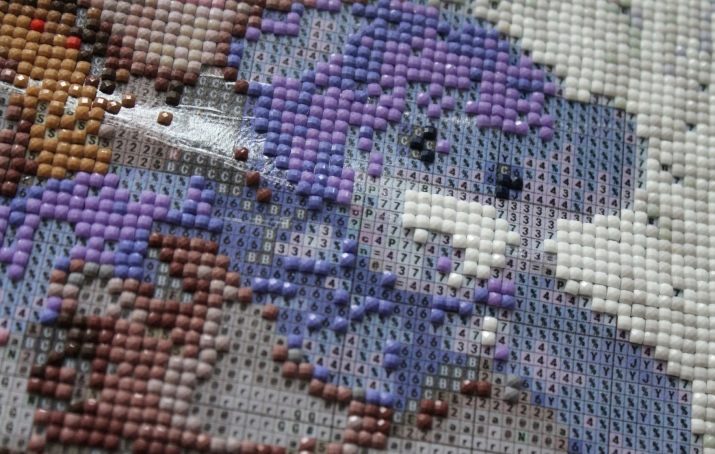
By color scheme
First, all the cells of one shade are filled, then the cells of the second, and so on. This method minimizes the risk of color errors.
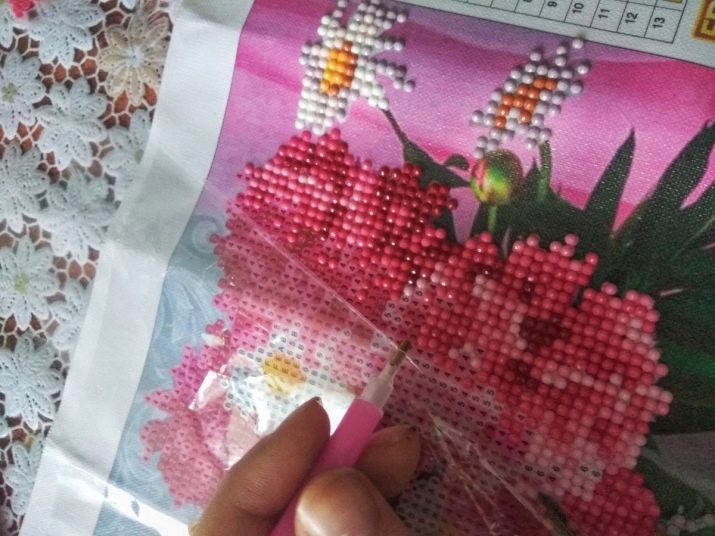
Along the ranks
It is advisable to start from the first row so as not to touch the finished work with your hand. In this case, the rows can be trimmed with a ruler.
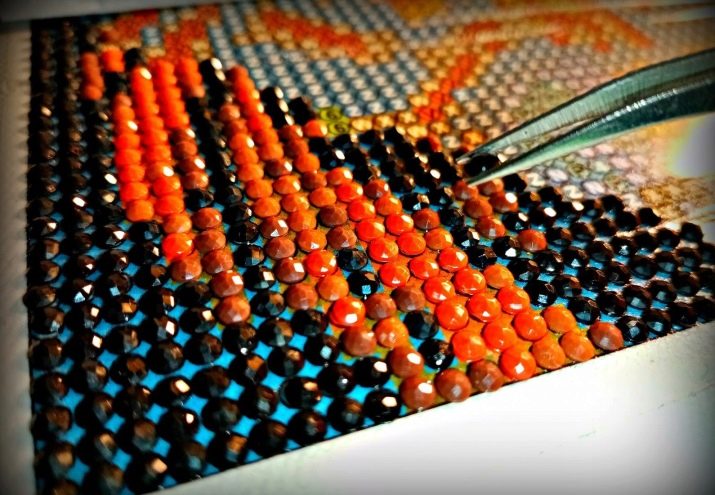
Work should be done with light pressure. The pressure should not be too strong, because in case of a mistake, if the rhinestone is glued too tightly, it will be difficult to replace it. Effort is required only at the last stage, when all the work is already visible. Do not allow the glue to dry: if you are unable to continue working, glue the film back - this way the glue will not dry out.
After you have laid out 5-7 rows, you should take a metal school ruler and carefully align the rows vertically and horizontally. In this case, the canvas should be monolithic, without any gaps and gaps.
At the final stage, the painting is covered with a sheet of paper or a thin canvas cloth and pressed with force over the entire area of the image. Experienced craftswomen recommend using a rolling pin for this.

At first, when working at home, there are difficulties with grabbing a stone. If you can't pick it up with tweezers, you can use a glue stick or a cosmetic pencil.
If the scheme of work is the author's, and all the necessary materials were purchased separately, then there is always the possibility of a shortage of one or another shade of rhinestones. There is no need to despair - in this case, you should buy pebbles from the same manufacturer or choose the ones that are as close as possible in color. In ready-made, purchased sets, such difficulties do not arise - manufacturers put rhinestones in them with a large margin.
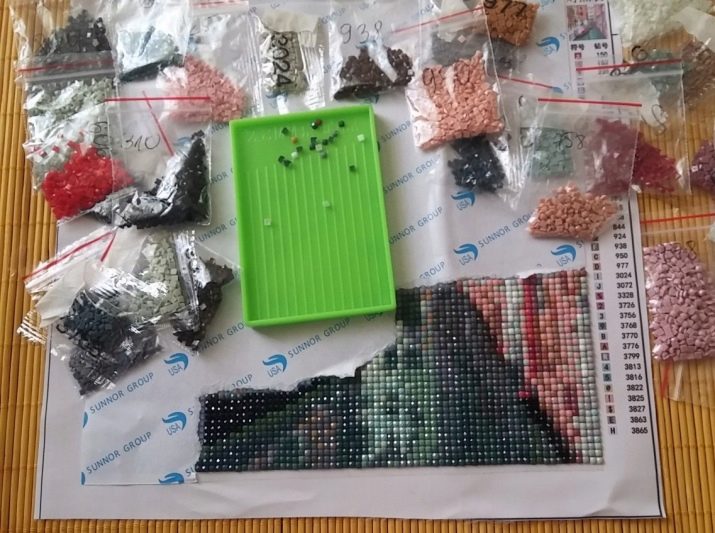
How to register?
A picture made using the technique of diamond mosaic can be an excellent present. This is a gift into which its creator puts a particle of his soul. And in order for the picture to look more presentable and complete, it can be framed. It can be made from metal, wood, plaster or any other material. You can use not only it, but also a mat and even glass, this will allow you to preserve the product for a long time. An alternative budget option is to place the mosaic in a photo frame, needlewomen often take a regular ceiling plinth for decoration without a stretcher. Frames decorated with the remnants of rhinestones look very advantageous.
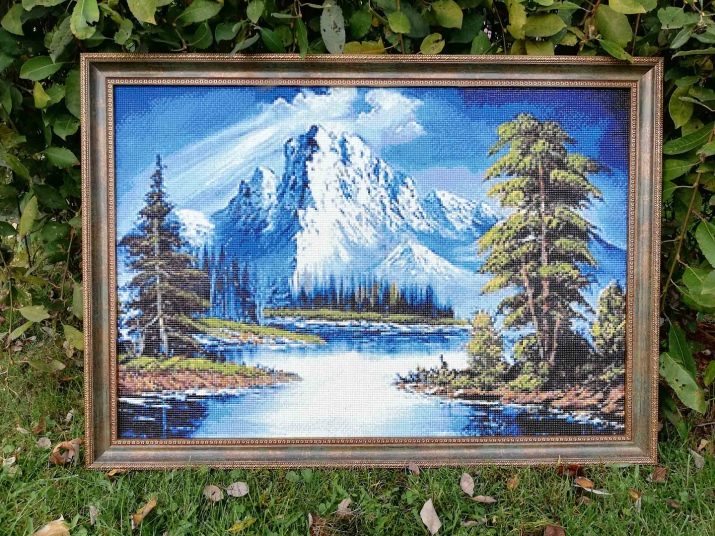
In conclusion, we present the recommendations of experienced craftswomen who can help novice needlewomen use the sets correctly and create truly beautiful paintings:
-
first of all, you need to glue the mosaic in the area that will be most convenient for you;
-
the layout is easiest to perform in stripes, since by placing pebbles over the entire area of the canvas, you can quickly get tired, and the technique will seem too tedious;
-
do not remove the protective layer from the entire base at once, otherwise it can be damaged or stained.
